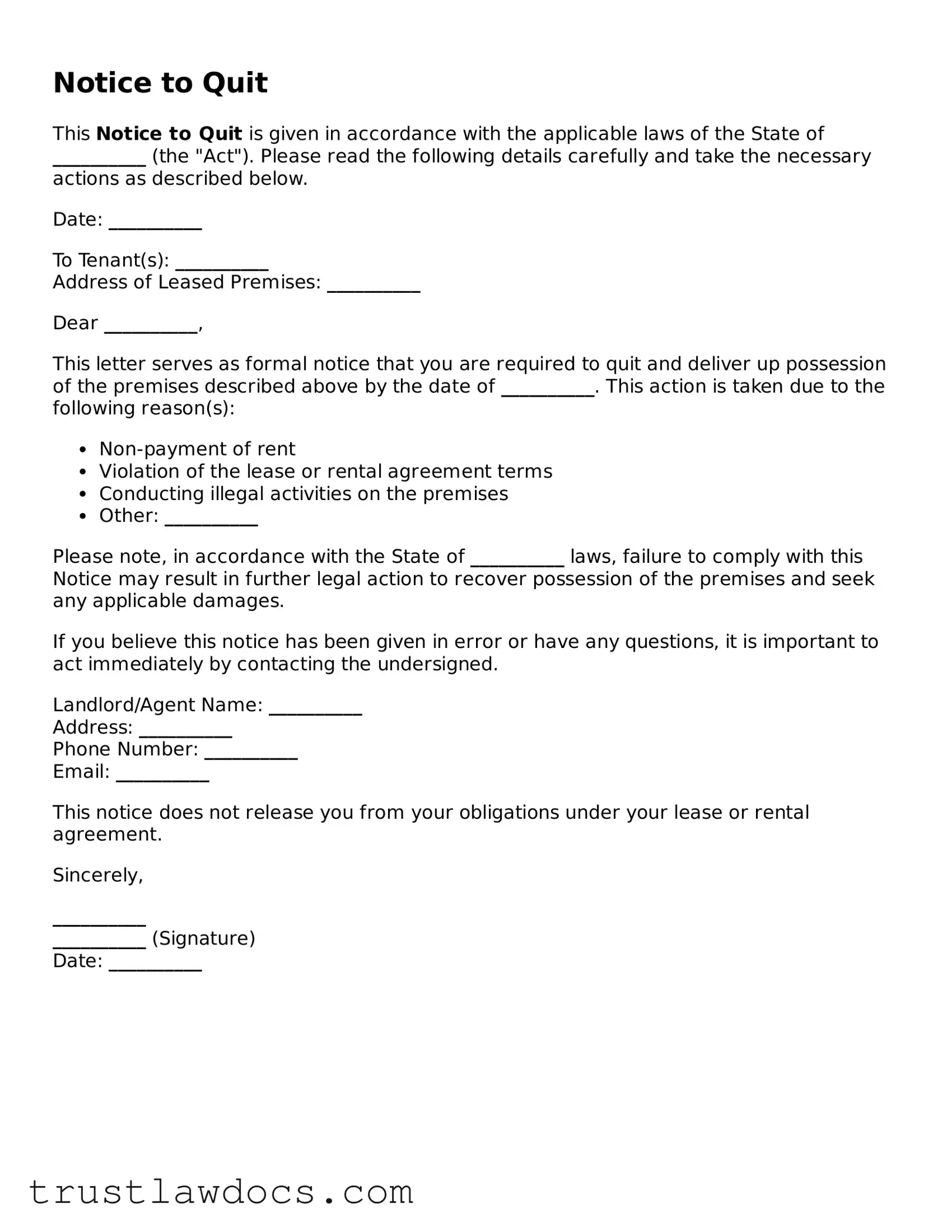The Eviction Notice, similar to the Notice to Quit, serves as a formal request from landlords for tenants to vacate the premises. Both documents are used in the initial stages of the eviction process, setting a specific deadline by which the tenant must leave. The key difference often lies in the reasons behind them; while a Notice to Quit can be issued for various breaches of lease terms, an Eviction Notice is specifically centered around the legal proceedings to remove a tenant.
A Lease Termination Letter shares common grounds with the Notice to Quit, as both signal the end of a rental agreement. However, a Lease Termination Letter can be mutual or initiated by either the landlord or the tenant without the contention usually associated with a Notice to Quit. This letter typically is used when both parties agree to end the lease early or under amicable conditions.
The Cure or Quit Notice is a specific form of the Notice to Quit, designed to address violations of the lease agreement, such as late rent payments or other breaches, by giving the tenant a chance to "cure" the issue. If the tenant fails to rectify the violation within the specified period, they are required to "quit" or vacate the premises. This document prioritizes resolution and compliance before proceeding to eviction.
The Pay or Quit Notice is another variation closely related to the Notice to Quit; it is issued when a tenant fails to pay rent on time. This notice gives tenants a final opportunity to pay the overdue rent to avoid eviction proceedings. The primary focus here is on financial compliance, emphasizing the importance of fulfilling rental payment obligations.
The Notice of Lease Violation, while similar to the Notice to Quit, is often used for less severe breaches of the lease agreement that do not immediately necessitate eviction. It serves as a warning to the tenant to correct a specific violation, providing details about the misconduct and the timeframe for its resolution, thus offering an opportunity for the tenant to remain in the property by adhering to the lease terms.
The Unconditional Quit Notice is the most severe form of the Notice to Quit, demanding that the tenant vacate the rented property with no opportunity to correct the lease violation. This notice is usually reserved for serious breaches, such as repeated late rent payments, significant damage to the property, or engaging in illegal activities on the premises. Its uncompromising nature makes it a tool for immediate action.
The 30-Day Notice to Vacate is utilized in many jurisdictions to inform tenants that they must leave the property within 30 days, often used for month-to-month rental agreements or as required by state law for lease termination. While it shares the purpose of ending a tenancy with the Notice to Quit, the 30-Day Notice to Vacate is typically broader and can be used without needing to cite specific violations of the lease agreement.
The Three-Day Notice to Pay Rent or Quit is a condensed version of the Pay or Quit Notice, given to tenants who have failed to pay their rent on time. This notice demands rent payment within three days to avoid eviction. It underscores the urgency of the financial obligation, providing a short timeframe for the tenant to rectify the situation and remain in the property.
